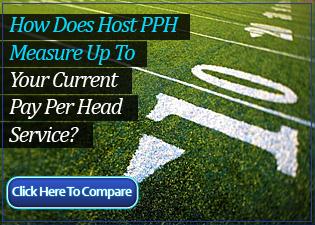 If you want to be a successful bookie you should always be looking for ways to maximize your player activity, make the business grow and earn more money.
If you want to be a successful bookie you should always be looking for ways to maximize your player activity, make the business grow and earn more money.
And even though horse racing offers the opportunity to get the highest hold percentage, a lot of you don’t dedicate enough time to finding players that wager on horse racing or promoting this type betting.
Horse racing offers the chance to earn a hold percentage as high as 18 percent, while for other sports it’s significantly lower than that. Ideally, the best hold percentage for the NFL, college football, and college basketball can be around seven percent, while in the NBA it could get as high as eight or nine percent.
If you’re earning a hold percentage of seven or more from your player packages you’re doing good. Anything over 10 percent usually indicates that your player packages are being extremely profitable.
Despite all this, some bookies focus mainly on getting clients for the traditional sports, which have well-defined seasons and take long breaks in between them. By getting your clients to wager on horses you instead get clients that bet all year long.
But to enjoy the benefits of horse racing wagering you as a bookie must know the proper way to offer it to your players.
If you don’t, then you will be limiting their betting options, forcing them to look for other things to bet on, or even pushing them to find another agent.
There are two ways to offer horse racing wagering, the old (wrong) way, and the new (proper) way.
The Old Way
Most bookies used to offer their clients horse wagering imposing maximum limits on the odds payouts based on how much activity the track gets. This, of course, means that at most only a handful of races will be worth betting on and a lot of races are not even going to see action.
Most bookies used to offer their clients horse wagering imposing maximum limits on the odds payouts based on the fact that they don’t get the same amount of action as the track gets. This, of course, means that at most only a handful of races will be worth betting on and a lot of races are not even going to see action.
In this case, the agent sets a limit of a maximum odd payout per wager that is usually around 48 to 2 for a win, 24 to 2 for a place and 10 to 2 for a show. They also have different payouts for exactas, quinellas, daily doubles among other types of plays.
While this protected you (the agent) from having to pay large amounts of money this limited the activity of the players and the options to bet on. Since this model favored the bookie, the players were also discouraged from betting on certain horses or from betting the horses at all.
By using the old model you’re basically implying that you don’t want your players choosing the longshot horses because, anyway, if they win you’re not going to pay them the full amount.
For example, if a longshot horse pays 80 to 1 in case it wins and you limit your players to a maximum payout of 24 to 2 they wouldn’t bet on that horse because they know that, regardless of the result, they’re not going to get paid the full amount.
This is, of course, counterproductive because it’s not worth to have clients that mostly bet the favorites as their odds of winning increase. Remember that the longshot horses are most likely to lose and the ones that will help you get a bigger hold percentage.
So, what should you do to prevent this from happening? In our next article, which will be published on Tuesday, we’ll show you what the new way is and the benefits that it offers.




